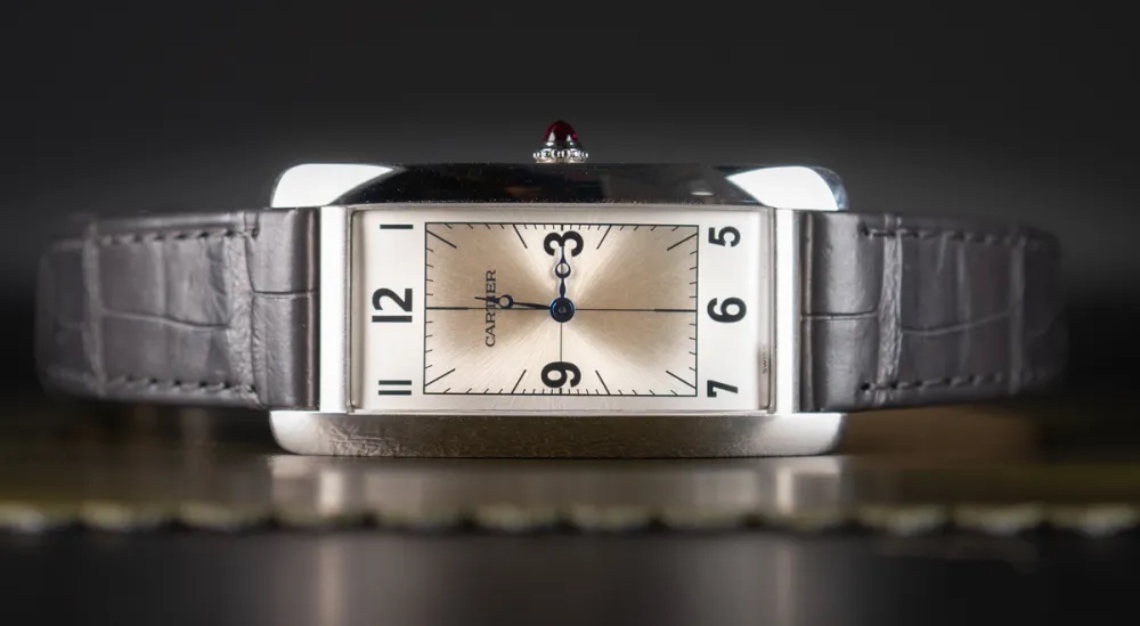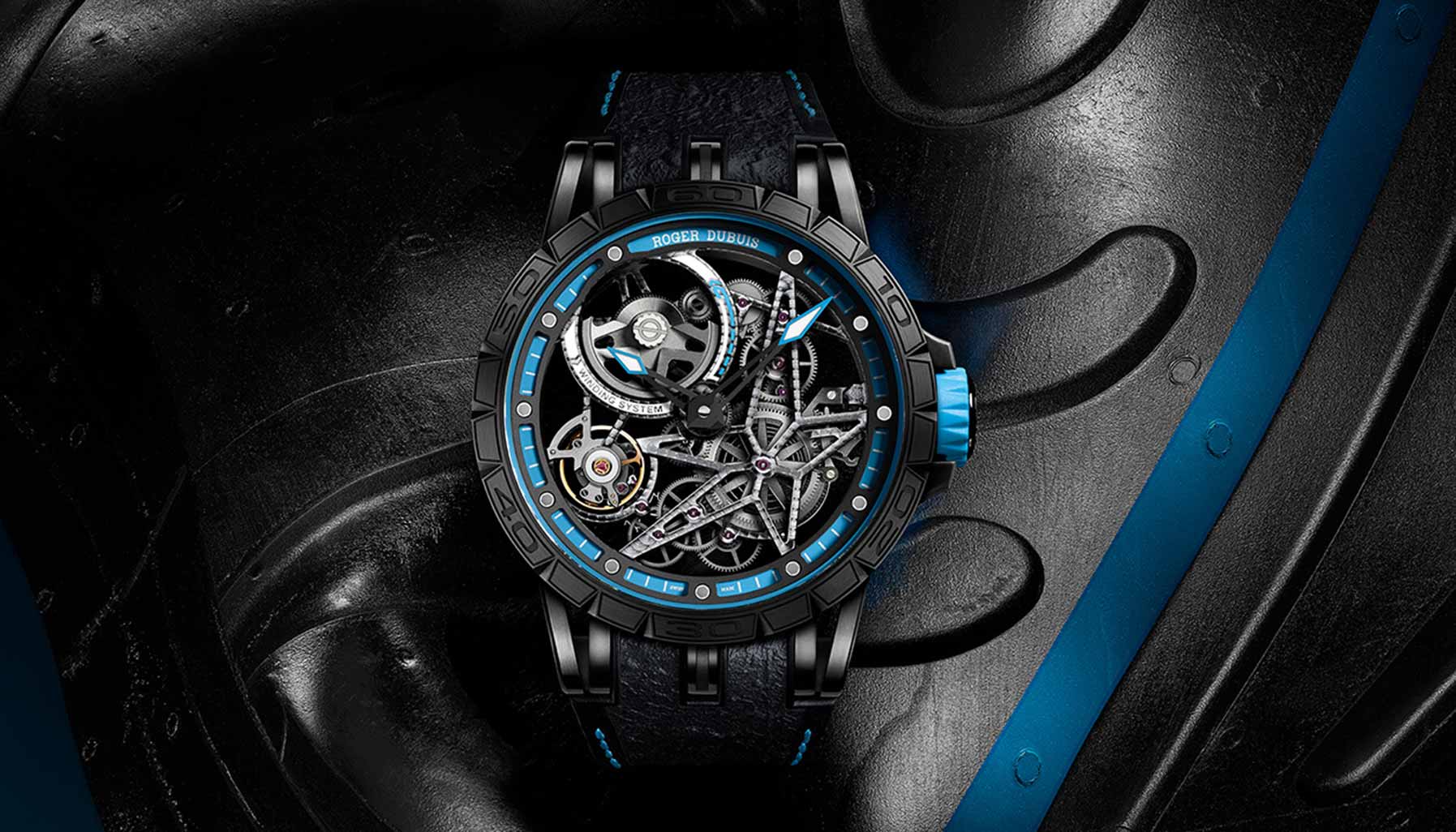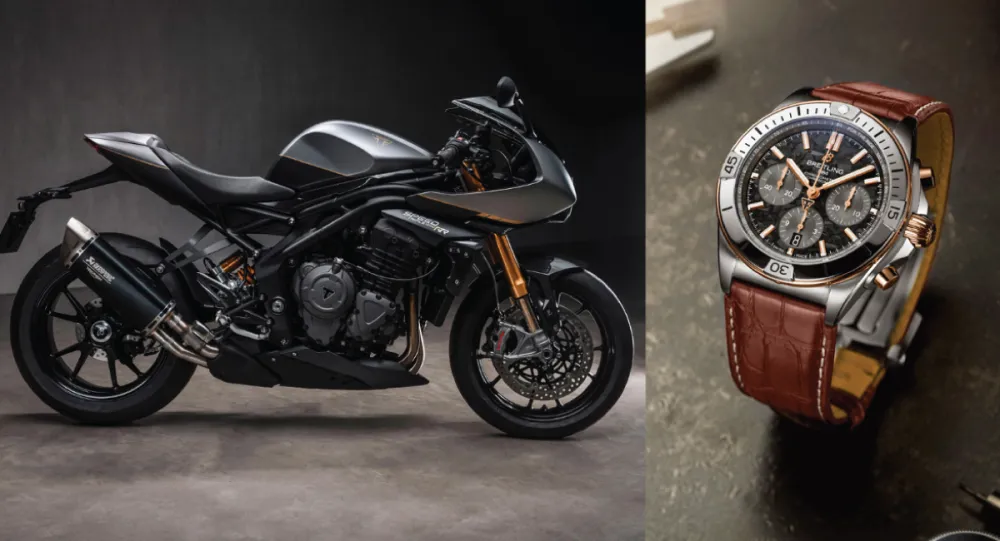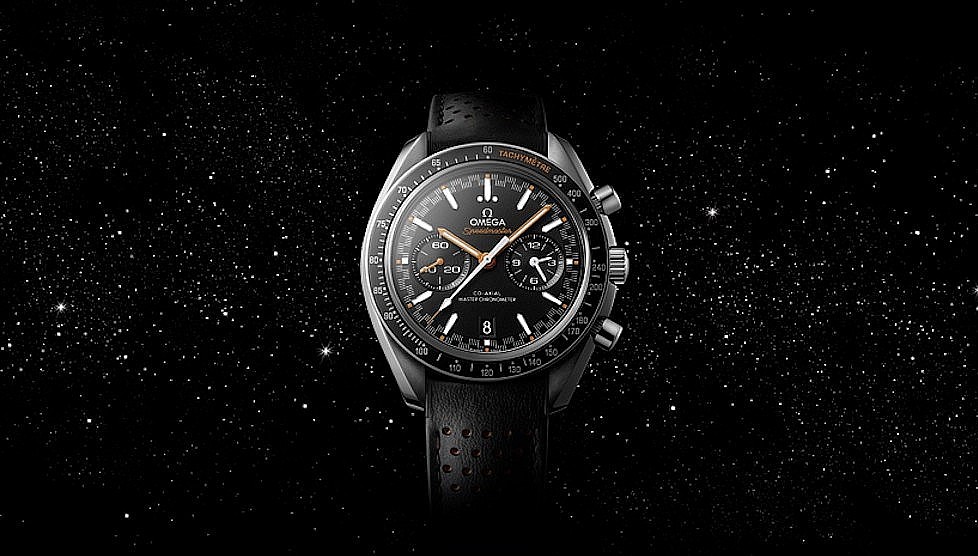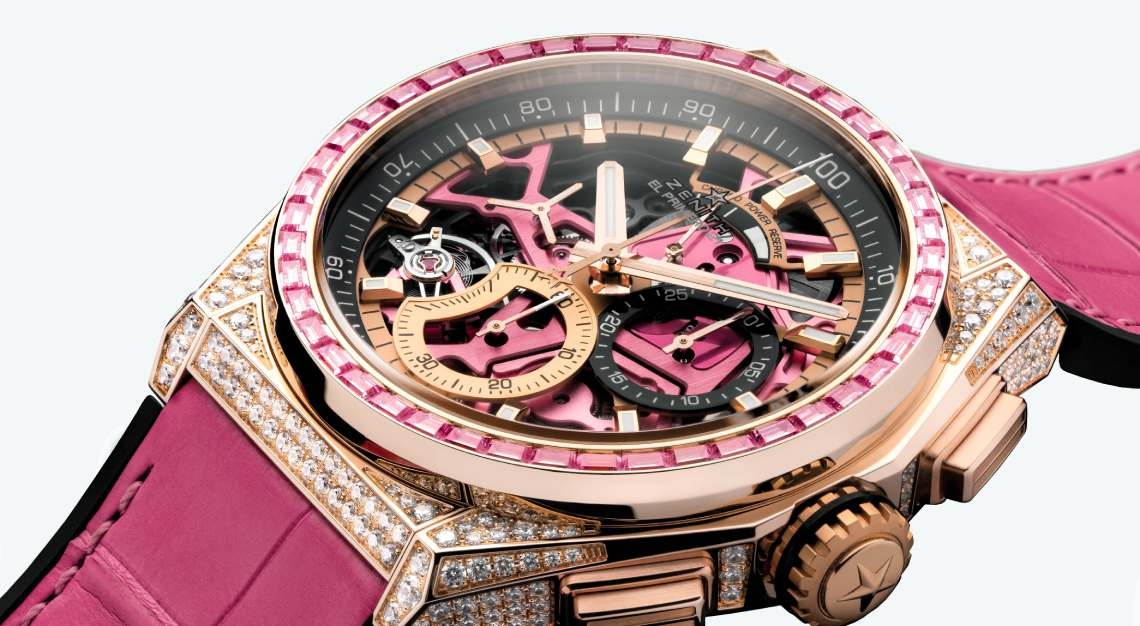A custom-built Cartier Tank on the pre-owned market is rare indeed, and it’ll run you US$110,000
We recently spent some quality time with a one-of-a-kind, platinum Cartier Tank Cintrée, which is currently for sale for US$110,000 through NYC’s Analog:Shift. The watch is a fascinating thing of beauty, and, as we investigated its origins further, it revealed a great deal about Cartier watches (especially Tanks and the use of platinum), but also about Cartier and the brand’s rich history.
Analog:Shift is a by-appointment-only dealership in Manhattan headed by expert collector James Lamdin, who curates an always-impressive stock of vintage and neo-vintage watches. Visiting the Analog:Shift offices in Midtown is like entering a horological museum, replete with its expert curator, pin-lit display cases full of stunning watches, and a library’s worth of reference books on watches.

In any museum there are special pieces that stand out, and this custom-built, one-of-a-kind platinum Tank Cintrée leapt forward as one of the most interesting and impressive timepieces in the current collection.
Only sometimes does Cartier build custom watches, and only sometimes does the owner decide to flip it. The rarity of both situations can’t be overstated, and it is entirely reasonable to suggest that this platinum Tank Cintrée is one of the most interesting and compelling modern Cartier watches currently on the pre-owned market. You will not find another like it. It is one of one—for now, anyways. Cartier does reserve the right to recreate the custom watches, and, accordingly, numbers them as “No. 1” and not as “No. 1 of 1.”
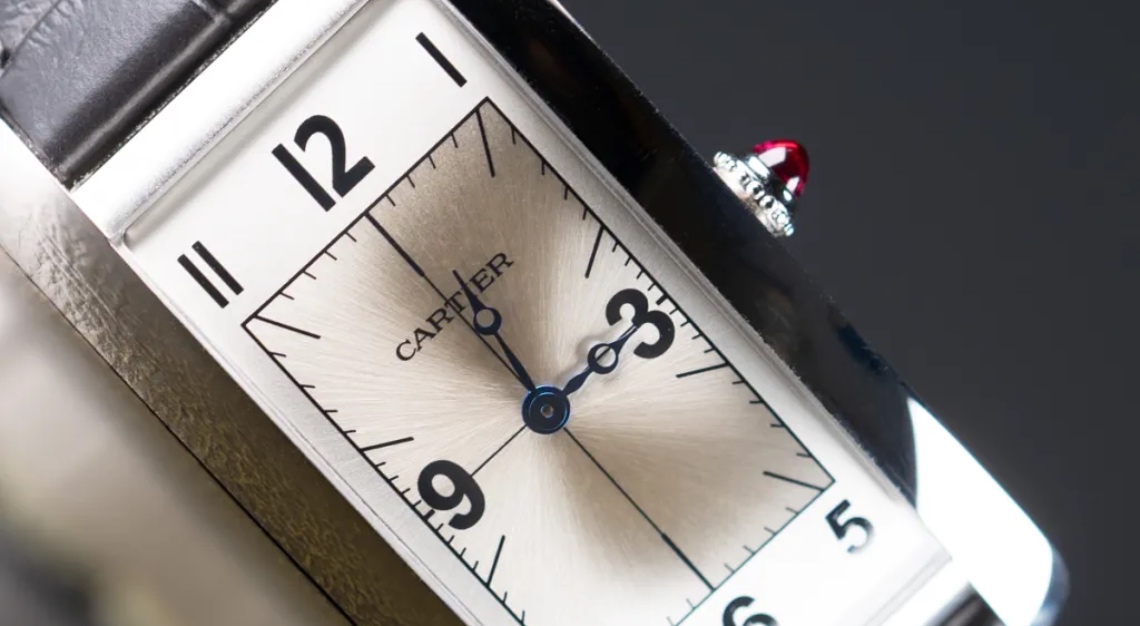
Cartier fills its annual watch catalog with models that appeal broadly, but these democratic recipes don’t always please the discerning pallets of serious watch collectors. When it comes to Cartier watches—and especially the many versions of the Tank—we watch aficionados can grow grumpy over the word “Automatic” appearing on the dial (wasn’t a thing when the Tank was invented), or we might long for a garnet instead of a blue sapphire cabochon atop the crown (because red is unique, and blue is not), or we might need a specific watch that’s not in the current Cartier catalog (because our eye delights in rarity). For the fussier collectors among us, Cartier offers custom watches through its N.S.O. programme, which stands for New Special Order.
You don’t need to be famous or to have recently purchased, say, a diamond tiara to gain access to Cartier’s custom watch programme, which loosely falls under Cartier’s highly regarded Privée monicker. You just walk into your local boutique and begin the conversation—though a pre-existing relationship will certainly help you plead your case for a custom timepiece.
Depending on how much of the watch you want to customise, you can expect to wait at least a year and perhaps as long as three years or more. Further, you may not be granted every wish you make, as Cartier will push back on design choices it deems off-brand, or which don’t respect the specific watch model’s heritage. Then there’s price, which you may not know until well into the design process. And then, finally, you’ll need to drop 50 per cent to secure your request before the real waiting begins, perhaps for years.
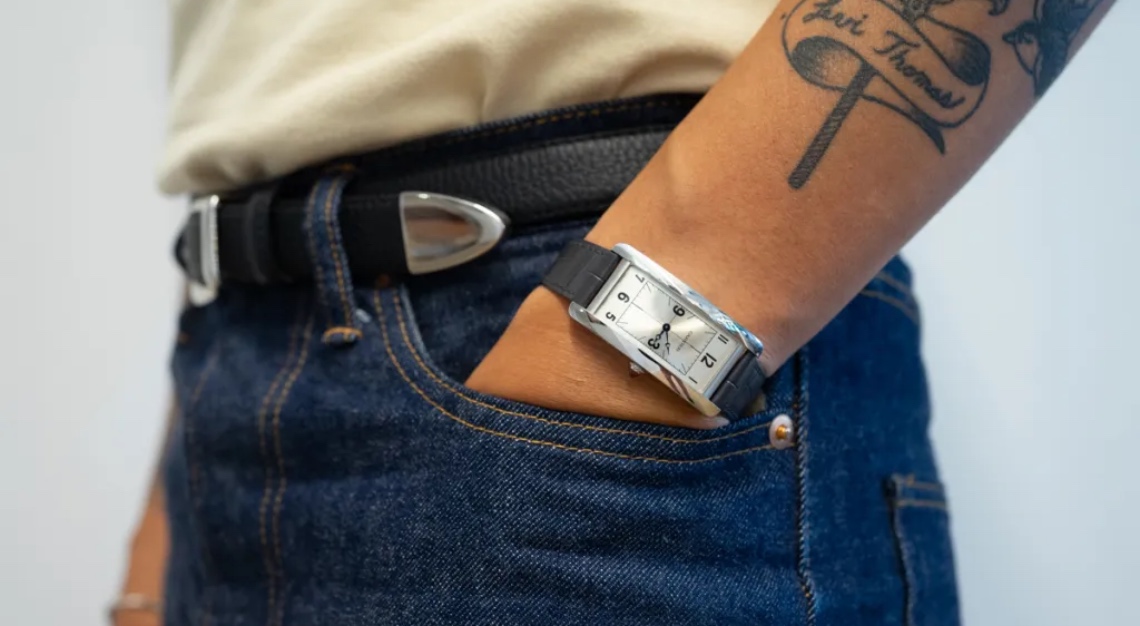
For all these reasons—and others we will detail below—this platinum Tank Cintrée coming onto the pre-owned market is deeply compelling. Let’s dig into what makes a Cartier like this so special.
As watch expert and author Jack Forester writes in his book Cartier Time Art: Mechanics of Passion, “Quality control at the Cartier Manufacture is integral to both the development and production of timepieces. During each stage of the development of a watch, all components are subjected to exhaustive testing to ensure their functionality, durability and ergonomic suitability. The Manufacture articulates the four goals of quality control as Aesthetics, Ergonomics, Chronometry and Integrity…” Having handled this Tank Cintrée and other models produced at Cartier’s Manufacture, this rigorous QC protocol is obvious in every detail.
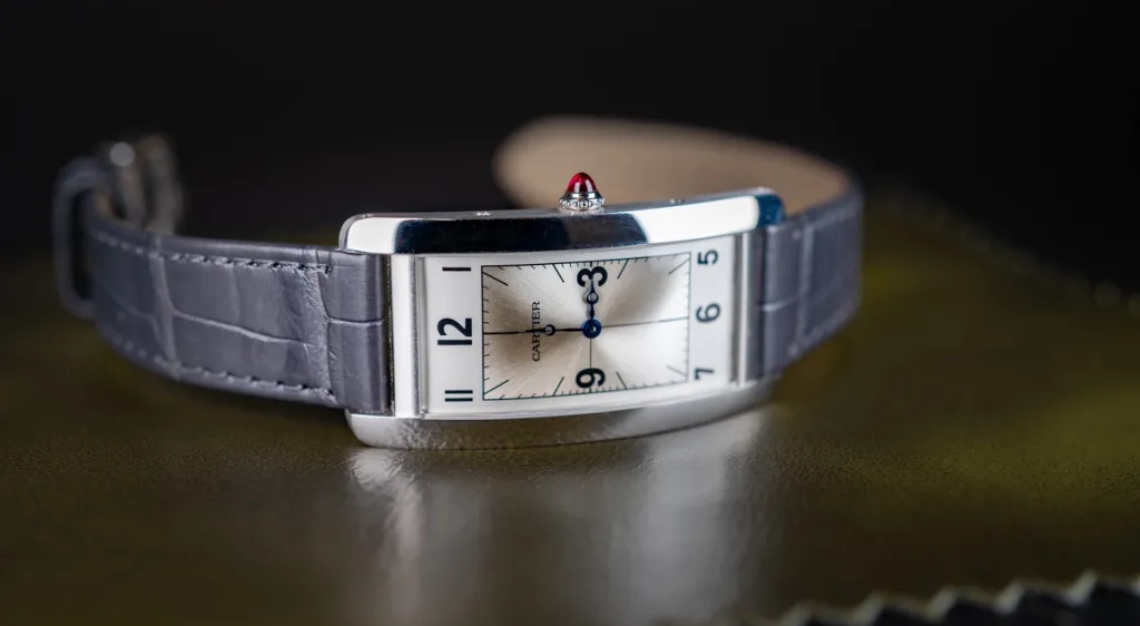
As for the use of platinum here, it is relatively rare that any Cartier watch is produced in platinum. (This remains true for most major watch brands. Just as salmon dials are often reserved for special clients by Patek Philippe and Vacheron Constantin, so are platinum cases.) Platinum has a special history at Cartier going back to the creation of avant-garde jewellery settings.
Francesca Cartier Brickell writes in her family memoir, The Cartier’s, The Untold Story of the Family Behind the Jewelry Empire, that early on platinum was, “Still used predominately for large-scale industrial purposes,” and “was not easily available for jewellers (who required only small amounts) in its pure form.” Cartier Brickell says that her great uncle Louis Cartier, inventor of the Tank, said that it’s “no easy task to transform the thin, light metal into a support for precious stones.” By studying the under carriage of train cars, Louis Cartier began to see how to use platinum, and, “Before long, Cartier had kick-started a revolution in jewellery through the use of this bright, strong metal,” she explains.
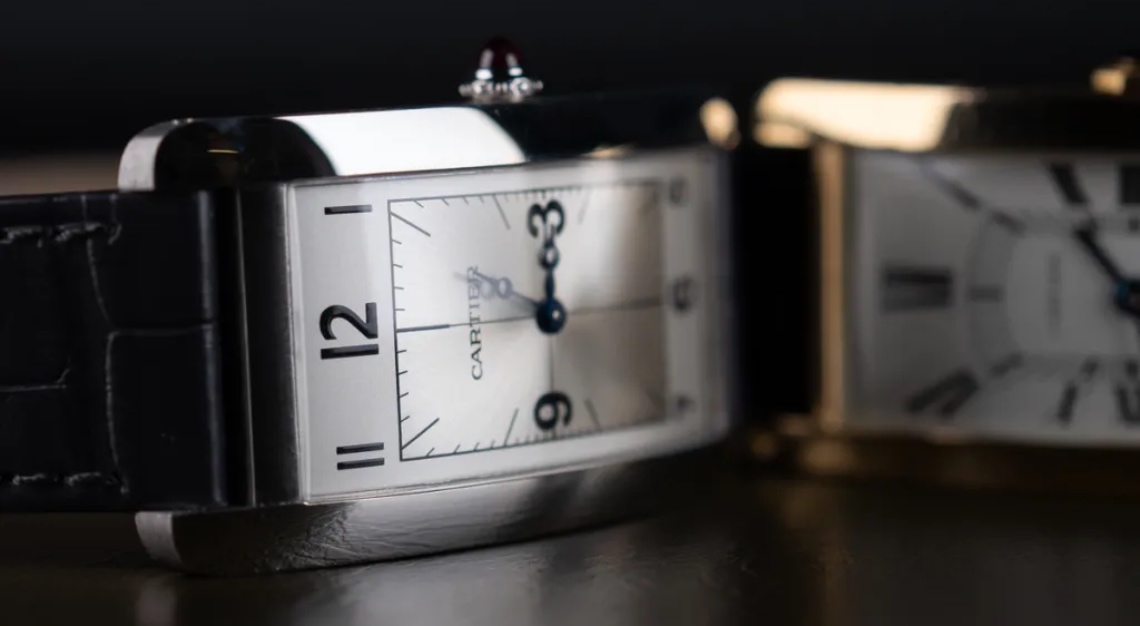
The Paris atelier produced one Tank Cintrée in platinum as early as 1924, according to Jack Forester in Cartier Time Art. But it is watch expert and historian Franco Cologni who details the use of platinum in the Tank watches. In his definitive history, Cartier, The Tank Watch (Flammarion 1998), Cologni writes that, “it is impossible to be sure whether the ‘first Tank’ had a gold or a platinum watchcase.”
Yet Cologni is definitive in stating that the second rectangular wristwatch Cartier ever produced was in platinum—this slightly ahead of the first Tank. “The second platinum watch, which comes from the war years (1915 or 1916), is mere millimeters away from being a Tank,” Cologni writes. He goes on to note that, “This watch makes scant concession to nostalgia: the [watch is] unadorned, platinum, smooth, plain, and quivering with a metallic luster, [and it] stands out from the leather strap like a machine beyond price, proclaiming its modern beauty.”
The Tank Cintrée we spent time with lives up to Cologni’s flowery description—especially given the squared-off Arabic numerical font which makes this dial so unique. But it’s the curved case that makes the the Cintrée tres chic. Cologni goes on to explain that, “The first important modification that the basic form underwent…gave rise to a new family of Tanks in 1921: the Tank Cintrée (‘curved’), the main characteristic of which was the case curving inward toward the wrist.”
However, interestingly, this curvature was originally intended to improve ergonomics, but was later found to not be a significant improvement over the fit of a small, flat Cartier Tank. It was likely Louis Cartier insisting that wrist watches imitate jewellery bracelets in every way possible that led to this unique curved watchcase, and it is just one more way in which this one-of-a-kind Cintrée stands out among so many wonderful Cartier watches on the market today.
This story was first published on Robb Report USA
